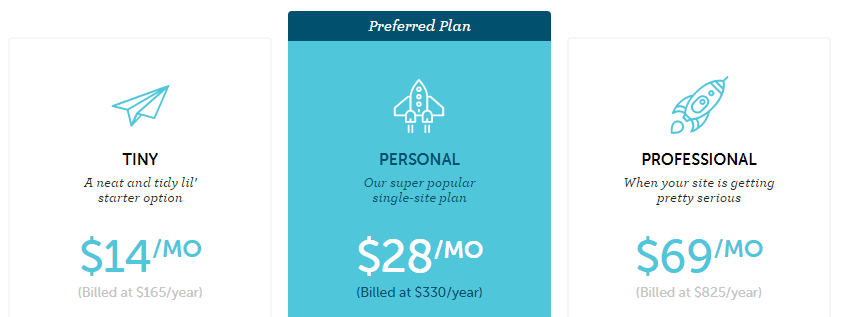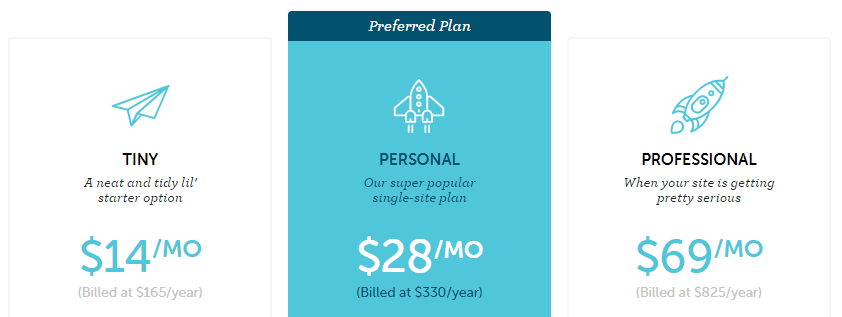In almost every case, the websites you visit are trying to sell you something. It can be a service, a product, even a theme or a plugin. However, you’ll be struggling to get any type of conversion unless you understand the way your visitors think and what they want.
When it comes to online marketing, psychology can be one of your greatest allies. Knowing a few psychological marketing tricks can help improve your conversions. In this article, we’ll introduce you to four such techniques, talk about why they work, and show you how to put them into action.
Let’s get to it!
The Role Psychology Plays in Converting Visitors
The best salesmen all understand one thing – getting people to part with their money is all about psychology. We’re not talking about tricking people, but rather nudging them to make decisions that benefit the both of you.
Consider the way most stores advertise sales, as an example. They use big red signs that focus on savings and make sure to remind you that these opportunities won’t last forever. That tactic invites visitors to make financial decisions they might otherwise leave until later, and it’s just one of the ways you can use psychology to drive sales.
The same tactics that work so well in real life can also improve conversions online. All you have to do is adapt the principles to the medium and optimize them until you find an approach that works for you. If you do that, you should see a significant increase in sales across the board.
4 Psychological Tricks That Help Convince Users to Convert
The word ‘tricks’ often has negative connotations, but that’s not the case here. In this section, we’re going to explore four psychological principles and how to apply them to your website. As long as the services and products you want to sell offer value to your customers, you shouldn’t feel bad about using psychology to drive conversions. After all, it’s all a part of a good marketing strategy!
1. Play Up the Fear Of Missing Out (FOMO)
Imagine a beer commercial with a group of friends having fun on the beach while knocking back a few bottles. In that example, the ad is using the Fear Of Missing Out (FOMO) in order to make you want to buy beer. To put it another way, it plays up the fun you might be having with their product, making you consider that not buying their brand of beer could lead to you missing out on an enjoyable experience.
The principle behind FOMO is all about showing or telling you how good your life might be if you bought a particular service or a product. Perfume ads tell you how irresistible you could be with a single spray, health supplements paint a picture of achieving the perfect body, and so on. As far as marketing goes, it’s one of the most widely used techniques to drive sales since it’s one of the most effective.
When it comes to websites, there are several ways you can take advantage of FOMO to drive sales, such as:
- Including promotional images in which people appear using your products while playing up their benefits.
- Timing your offers to expire, so visitors feel compelled to convert immediately rather than risk losing out.
- Using language that plays up the FOMO in your Call To Action (CTA) and copy, such as “Don’t miss out on this offer!” or “Join us in this exclusive opportunity!”.
The approach you use when it comes to the FOMO technique will largely depend on the product or service you’re selling. However, you’ll see the best possible result if you play up that product’s exclusivity, and show how visitors might be losing out on a good deal if they wait too long.
2. Use the Foot-In-The-Door (FITD) Technique
If an acquaintance asked you for $100, you’d probably say “No”. However, if that same person asks for $20 first and you say “Yes”, you’re far more likely to loan them the remaining $80 if they ask for it later. It sounds convoluted, but the psychology here is simple – when you agree to do someone a favor, it forms a bond. We’re more likely to trust people we’ve done a favor for, or even find them more likeable. In turn, this makes us more prone to agree when they ask us for more substantial favors down the line.
In sales, this is known as the Foot-In-The-Door (FITD) technique, and a lot of businesses use it to their advantage. The entire process doesn’t have to be as clear-cut as our $100 example, either. Imagine you’re signing up with a new Internet Service Provider (ISP) and you decide to settle for the middle of three plans. The ISP now has its foot firmly planted between your door and the frame. In the future, they may try to sell you a more expensive plan – perhaps with some sort of discount – and you’ll be more likely to say “Yes” than someone who hasn’t already done business with them.
When you run a website, there are several ways you can take advantage of the FITD technique, such as:
- Asking users to share their email addresses with you, which leaves the door open for future marketing opportunities.
- Getting users to fill out surveys to help you provide a better service for them.
- Convincing users to comment on your content, which makes them more likely to return to your website.
You can be very creative when it comes to getting your foot in the door. In our experience, the best way to get visitors to agree to do something for you is to offer them something in return, which brings us to the next section.
3. Embrace Reciprocity to Offer Freebies
Establishing a bond with your visitors is a powerful way to drive sales. However, getting your foot in the door can be difficult these days. When we navigate the web, we’re bombarded with advertisements and offers on almost every site. That overload makes us very good at filtering out marketing content.
To counter this, many internet marketers have begun to take a more active approach to getting your attention, known as ‘reciprocity’. Instead of just telling you about the benefits of their products, they offer you free stuff to get your attention. Once you accept and use a freebie, you’ll be more likely to return the favor and convert, the thinking goes.
This is the same principle that drives fast-food places to offer samples to passersby. There are several ways you can adapt it to the web at little cost to yourself:
- Offer users access to exclusive content when they sign up to your mailing list.
- Create a demo of your product, including limited features. You can also offer a full, temporary trial so visitors can test it for themselves.
- If you’re a freelancer, you can offer a free limited consultation so they can decide whether to hire you.
That first scenario is one of our favorites. After all, it combines the reciprocity effect with the FITD technique. For example, you can offer your visitors a free e-book with content not published on your site when they sign up to your mailing list. Then, you can contact them at a later date with offers. It takes work to create an e-book, of course, but once you do so, you can reuse it an infinite number of times. Overall, the benefits should far outweigh the time you’ve invested.
4. Employ the Decoy and Anchoring Effect
In most cases, when a website offers you multiple tiers of services or products, there’s one option that makes up the bulk of their sales. Take hosting providers, for example. Nowadays, hosting is arguably a race to the bottom in some aspects. Everyone is trying to offer the lowest prices and sign up as many users as possible. This is good for customers since they don’t have to spend as much money. However, it can be difficult for providers, who have to work with smaller profit margins.
The smart approach is not to nix low-cost plans. Instead, you can play up the advantages of more expensive options. In these cases, you need to convince customers they’re still getting a good deal. You can do it using a mix of anchoring and decoy effects:
In the example above, the $14 price is our anchor. It’s the first piece of information you get, and sets the tone for the rest of the prices. Next up, you see a plan that’s twice as expensive, but it offers a lot more features. It’s a good deal if you need that added functionality, but you may need an extra push to convince yourself. That’s where we hit you with a third plan that’s over twice as expensive, which in this case, is the decoy. If you opt for that plan, the provider will surely be happy, but the goal here is to get you to compare those second and third plans. This will make you more likely to think that $28 per month might just be worth it.
When it comes to other types of websites, there are plenty of ways to use anchoring and decoys to make your prices seem more attractive. These include:
- Displaying a crossed over price with a better offer next to it, which is particularly common during sales.
- Focus on the difference in percentage between the prices you display.
- Order your pricing tables so the last option makes the previous ones look more attractive by comparison.
In most cases, you’ll take advantage of these two effects while using pricing tables. It gives you an opportunity to use multiple prices to play off each other and subtly highlight a particular option.
Conclusion
When it comes to marketing, you need to use every tool at your disposal to get an edge. Psychology offers you an entirely new set of tools to nudge your visitors towards converting. By implementing a few of these tricks, you should start seeing an increase in your sales.
Here are four simple techniques you can implement to convert users:
- The Fear of Missing Out: This technique plays up the benefits other people get from a product.
- The Foot-in-the-Door technique: Research shows it’s easier to convince people to do something if you start with smaller, simpler requests.
- Reciprocity: In most cases, the best way to get someone’s attention is by using a freebie.
- Decoy and anchoring: Play your product’s prices off each other to make them seem more attractive.
Have you ever tried using one of these techniques to increase conversions on your website? Share your experiences with us in the comments section below!
Article image thumbnail by Artistdesign29 / shutterstock.com.


